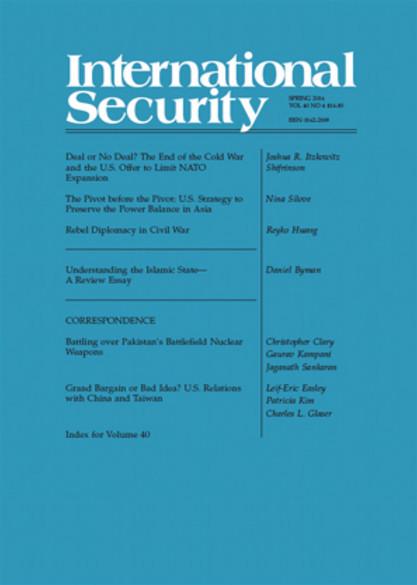中国国际危机中误判的制度根源
IF 6.1
1区 社会学
Q1 INTERNATIONAL RELATIONS
引用次数: 1
摘要
在国际危机中,中国什么时候容易误判?国家安全机构——决定领导人与其外交、国防和情报机构之间信息流动的规则——为这个问题提供了一个重要的答案。一个理论框架区分了三种制度类型:综合的、碎片化的和孤立的。综合机构通过建立向领导人传递官僚信息的能力,以及通过促进官僚机构之间的竞争性对话来提高其提供的信息的质量,从而减少误判的风险。相比之下,在两种类型的病理制度下更有可能出现误判。支离破碎的制度降低了向领导者传递官僚信息的能力,并鼓励官僚操纵信息以符合领导者的先前信念。孤立的制度限制了官僚机构之间的信息共享,这降低了对信息的评估,并鼓励官僚机构操纵信息以适应其组织利益。对1949年至2012年中国国际安全危机的中n分析表明,国家安全制度有助于解释其大多数危机误判。对1962年国民党入侵恐慌、1969年中苏边境冲突和2001年EP-3侦察机事件的案例研究,说明了国家安全机构在国际危机中形成误判风险的机制。本文章由计算机程序翻译,如有差异,请以英文原文为准。
The Institutional Origins of Miscalculation in China's International Crises
Abstract When is China prone to miscalculate in international crises? National security institutions—the rules shaping the flow of information between leaders and their diplomatic, defense, and intelligence bureaucracies—offer one important answer to this question. A theoretical framework differentiates between three institutional types: integrated, fragmented, and siloed. Integrated institutions reduce the risk of miscalculation both by building capacity to relay bureaucratic information to the leader, and by fostering a competitive dialogue between bureaucracies that improves the quality of information that they provide. In contrast, miscalculation is more likely under two types of pathological institutions. Fragmented institutions reduce capacity to relay bureaucratic information to leaders and encourage bureaucrats to manipulate information to conform with the leader's prior beliefs. Siloed institutions restrict information sharing between bureaucracies, which degrades the evaluation of information and encourages bureaucracies to manipulate information to suit their organizational interests. A medium-N analysis of China's international security crises from 1949 to 2012 demonstrates that national security institutions help to explain the majority of its crisis miscalculations. Case studies on the 1962 Nationalist invasion scare, the 1969 Sino-Soviet border conflict, and the 2001 EP-3 reconnaissance aircraft incident illustrate the mechanisms by which national security institutions shape the risk of miscalculation in international crises.
求助全文
通过发布文献求助,成功后即可免费获取论文全文。
去求助
来源期刊

International Security
Social Sciences-Law
CiteScore
7.40
自引率
10.00%
发文量
13
期刊介绍:
International Security publishes lucid, well-documented essays on the full range of contemporary security issues. Its articles address traditional topics of war and peace, as well as more recent dimensions of security, including environmental, demographic, and humanitarian issues, transnational networks, and emerging technologies.
International Security has defined the debate on US national security policy and set the agenda for scholarship on international security affairs for more than forty years. The journal values scholarship that challenges the conventional wisdom, examines policy, engages theory, illuminates history, and discovers new trends.
Readers of IS discover new developments in:
The causes and prevention of war
U.S.-China relations
Great power politics
Ethnic conflict and intra-state war
Terrorism and insurgency
Regional security in Africa, Asia, Europe, and Latin America
U.S. foreign and defense policy
International relations theory
Diplomatic and military history
Cybersecurity and defense technology
Political economy, business, and security
Nuclear proliferation.
 求助内容:
求助内容: 应助结果提醒方式:
应助结果提醒方式:


